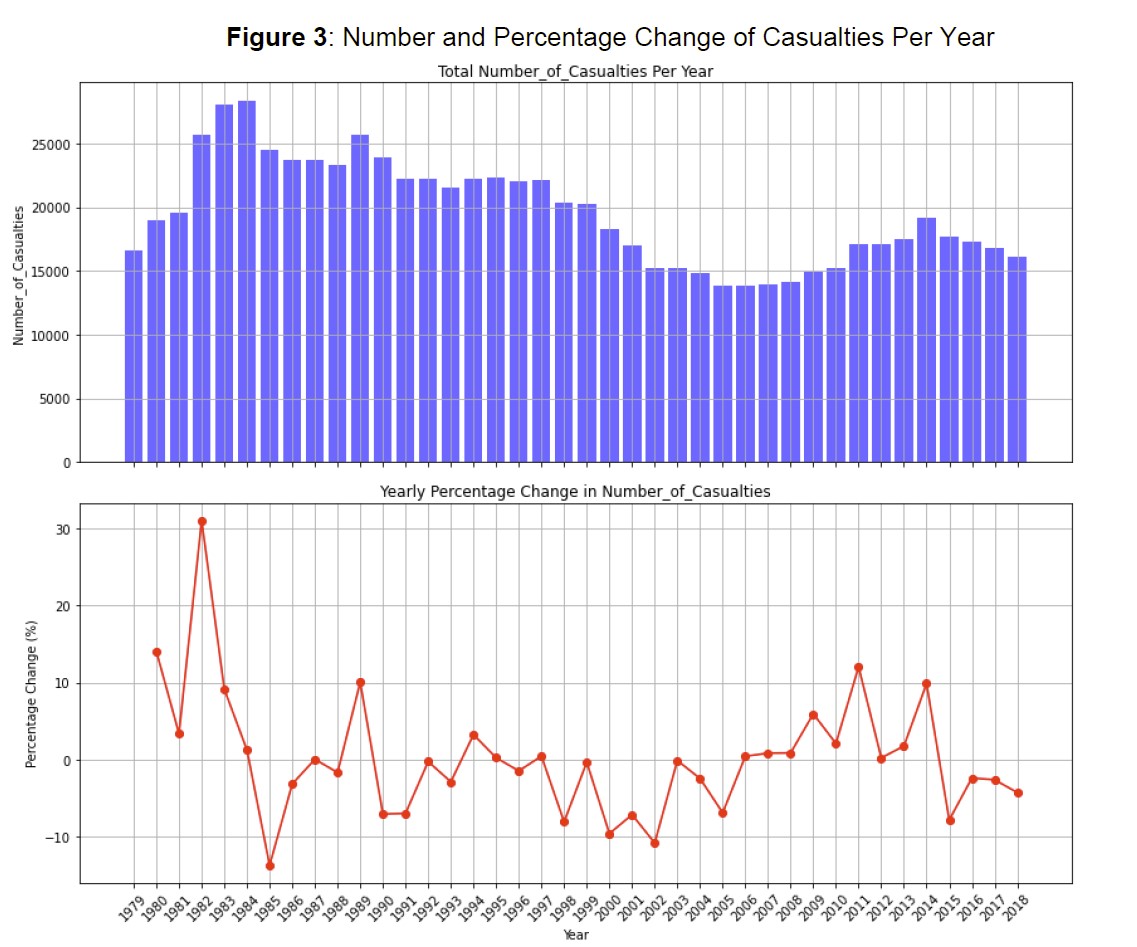
Cycling has emerged as a popular mode of transportation, promoting health and sustainability. However, cyclists face various risks, including crashes involving motor vehicles. Moreover, the growing prevalence of urban cycling as a response to traffic congestion and air pollution underscores the urgent need to address safety concerns and enhance infrastructure for cyclists sharing the road with motorized vehicles (Karanikola P, Cycling as a Smart and Green Mode of Transport in Small Touristic Cities., 2018). Understanding the factors contributing to cyclist injuries is crucial for enhancing road safety and promoting sustainable mobility. In this study, data from Bicycle Crashes in Great Britain from 1979 to 2018 are analysed to investigate the relationship between several factors and the severity of cyclist injuries. Specifically, the focus is on critical factors such as age group, day of the week, speed limits (categorized as under 30 km/h, between 30-50 km/h, and above 50 km/h), number of vehicles involved, weather conditions, road type, light conditions, road conditions, gender, and number of casualties. The supervised machine learning algorithm CatBoost is used to predict cyclist injury severity based on these factors. The feature importance analysis revealed that age group is the most significant predictor, followed by the day of the week and speed limits. Other important factors include the number of vehicles involved, weather conditions, road type, and light conditions. Lower speed limits, particularly under 30 km/h, are associated with reduced cyclist injuries, while adverse weather and poor road conditions significantly increase the severity of injuries. These findings underscore the importance of comprehensive safety strategies that consider various factors influencing crash severity. The implications of the study extend beyond academic research, informing policymakers, urban planners, and transportation authorities about the critical role of speed limit regulations in promoting cyclist safety. Advocacy for evidence-based measures, such as age-specific safety programs, improved infrastructure, and effective speed management strategies, is essential for enhancing cyclist protection. In conclusion, this analysis underscores the significance of integrating speed management measures into broader road safety strategies to create safer environments for cyclists and promote sustainable urban mobility.
| ID | pc548 |
| Presentation | |
| Full Text | |
| Tags |













